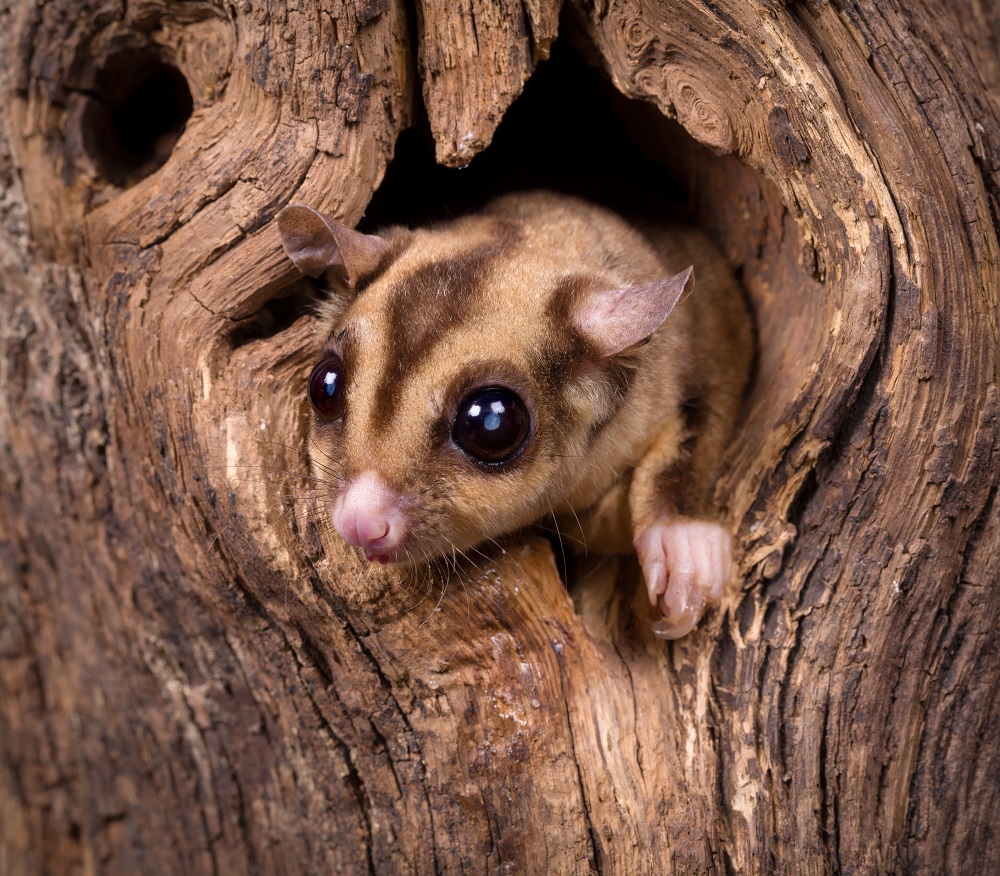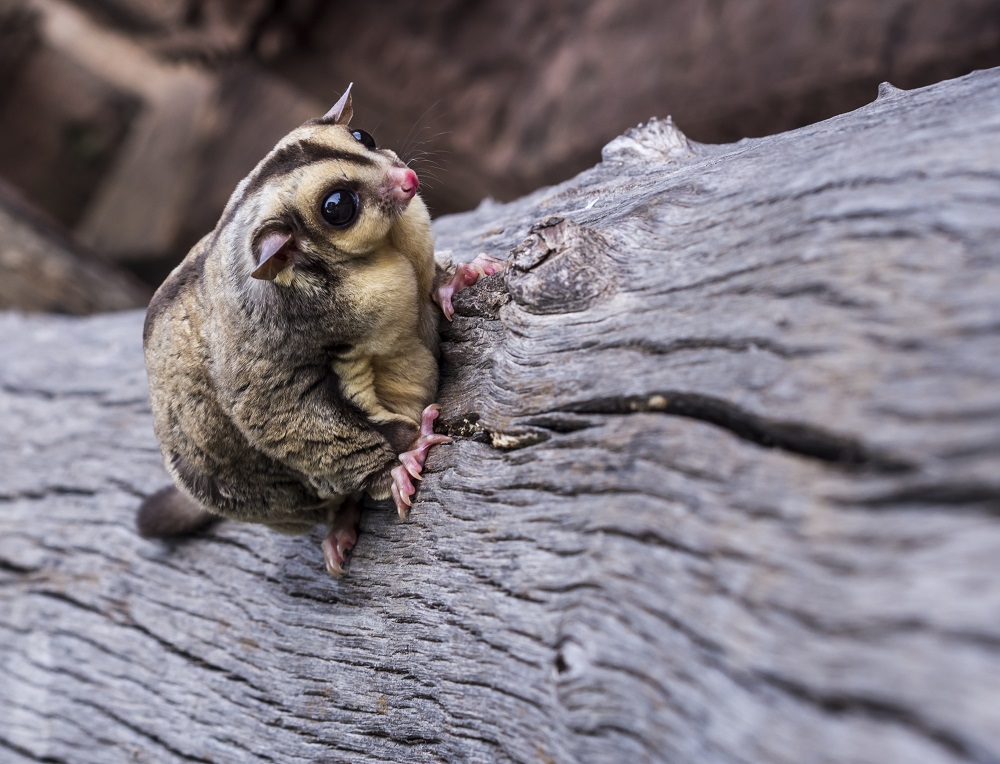Marcus Butler
2 February 2018: Despite their cute face and sweet name, sugar gliders can be hungry predators and new University of Canberra research has confirmed why these marsupials are causing such problems in Tasmania – they’re an introduced pest.
Sugar gliders (Petaurus breviceps) are a small omnivorous possum species which has been found to be killing and eating Tasmania’s swift parrots (Lathamus discolor), placing the critically endangered species under increased pressure.
Dr Catriona Campbell, University of Canberra and Invasive Animals CRC graduate, studied the genetic make-up of the sugar gliders to uncover its hidden history as part of her thesis with the findings published TODAY in the journal Diversity and Distributions.
“When it was discovered that the sugar gliders were killing and eating the swift parrots we asked: why has the natural balance been thrown out?” Dr Campbell said.
“If we could find evidence that the sugar glider had been introduced to Tasmania, then this might help explain this predatory behaviour,” she added.
“What we uncovered was that sugar gliders are likely to have been introduced to Tasmania in the 1830s as pets. Their genetic make-up is similar enough to the gliders on the mainland that it is unlikely they have been separated for more than 150 years or so.”
Along with the genetic analysis, Dr Campbell and colleagues from the University’s Institute for Applied Ecology (IAE), The Australian National University, Tasmanian Museum and Art Gallery, University of Queensland and the CSIRO, studied documents and museum specimens dating back more than 100 years detailing mammal species in Tasmania and their distribution.
CSIRO Research Scientist Clare Holleley said the research highlights the importance of collections in resolving pressing modern conservation issues.
“Without collections, we would not know that sugar glider predation is a recent threat to swift parrots,” said Dr Holleley, one of Dr Campbell’s supervisors and adjunct Associate Professor with IAE.
“Environmental managers in Tasmania can now plan for the swift parrot’s recovery with confidence. Several other researcher teams have begun sugar glider control efforts in Tasmania recently, with mixed success. There is now a fresh focus on preventing the gliders from being able to access parrot nesting boxes.”
The article When is a native species invasive? Incursion of a novel predatory marsupial detected using molecular and historical data was led by Dr Campbell (IAE) and Dr Holleley (CSIRO and IAE) and co-authored by a multi-institutional team including: IAE’s Professor Stephen Sarre, Associate Professor Bernd Gruber, and Dr Anna MacDonald, along with Dr Dejan Stojanovic (ANU), Ms Kathryn Medlock (Tasmanian Museum and Art Gallery) and Dr Stephen Harris (University of Queensland).
Dr Campbell was supported and funding in this project by the Invasive Animals Cooperative Research Centre, a Rocket Crowd Funding campaign, and by the University's IAE.




